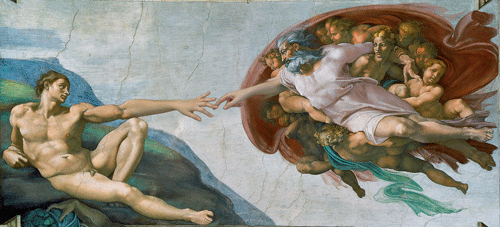
One very not cool thing about the Met: it’s on half of the planet’s short-list of things to do in the city and so IT IS OFTEN PACKED. Especially in a temporary exhibition promising Instagram-feed intimacy with our most cherished avatar of Catholic Guilt: Mr. Sistine Chapel himself, Michelangelo. Word to the wise: get in before 11 am or wait until Thursday and Friday when the museum stays open until 9 pm and go late, there were more than a few elbows thrown in defense of midday Snapchat stories featuring nude boys rendered in marble.

Michelangelo is the obvious master of the male abdomen and is known as a kind of archetypal tyrant of craft. The exhibit however wants to direct your attention to the master’s other gifts: the male buttocks for example.
There were also architectural drawings, casual studies of arms and legs and an ear. Even a couple of female nudes. The idea behind showing drawings is to let the audience into the artist’s process, in this case maybe to convince us that Michelangelo was as much of a genius as Leonardo da Vinci.
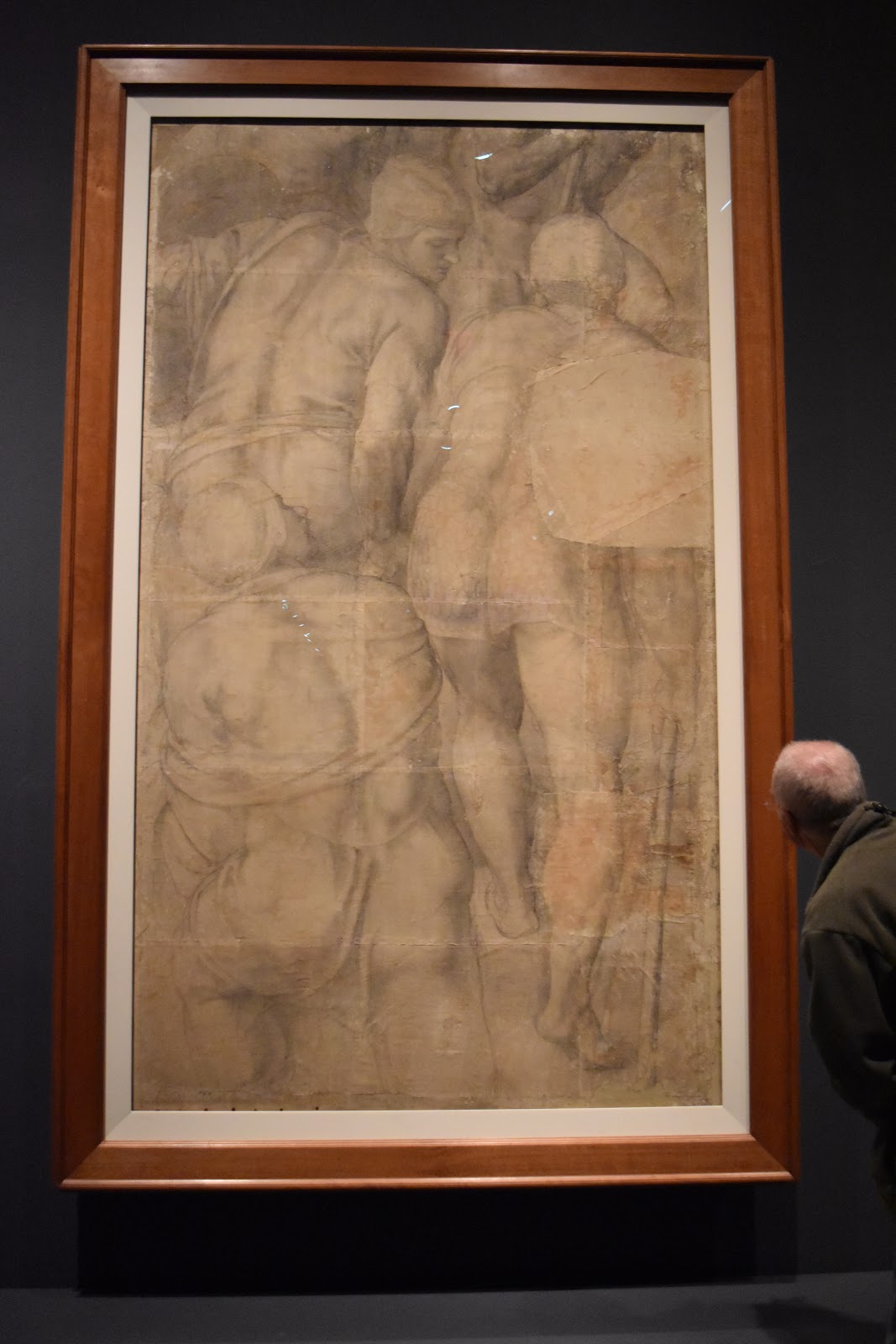
Bald guy checking out some butts.
And there are some not-often-celebrated works included that will pull you over from across the gallery. His architectural drafts’ sensitive translucence unfolds each layer of the structure, they probably look like how ghosts see walls, transcendent in that “I’ve completely transcended my physical form” kind of way. The way that he layers different studies on top of one another or crams a scrap of paper full of Madonna and Childs is tripped-out fun and one of his earliest paintings, the Temptation of Saint Anthony is actually a psychedelic masterpiece that time-traveled into his dreams from the 1960s. More or less weird than Dalí’s version? You decide.
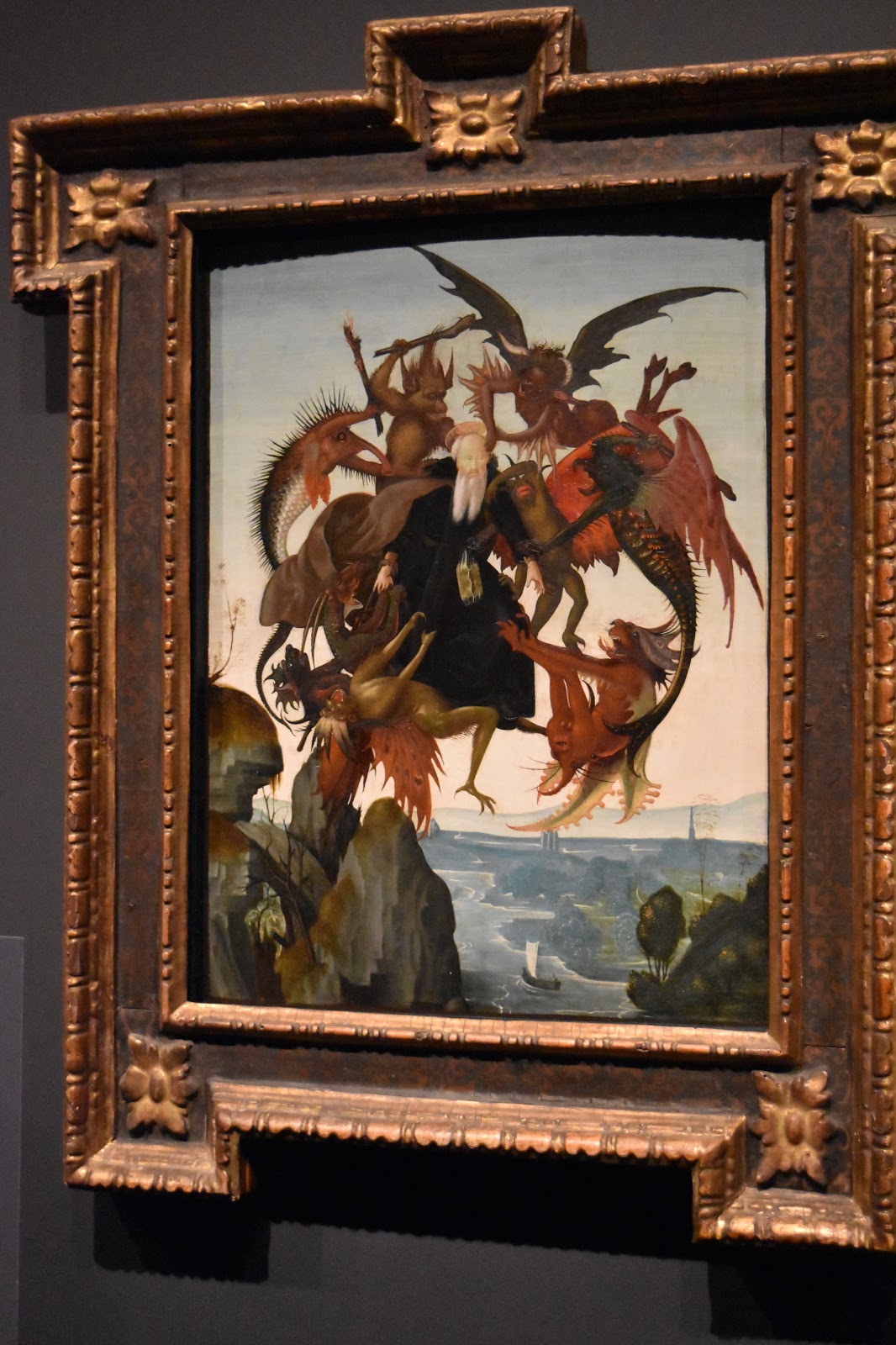
Michelangelo Buonarotti The Temptation of St. Anthony at the Metropolitan Museum of Art, New York
But Michelangelo was an obsessive and tortured guy, not a space alien with extraterrestrial knowledge (which da Vinci was). The exhibit seems more interested in gossiping than making an academic point anyway. The texts hanging by the drawings will point out things like when the same model’s legs show up in studies done years apart, and they’ll remind you that the model was a very young man. Quel scandale. Turns out Michelangelo had great taste in legs though and the repeated use of “study” to describe drawings of the body parts he found attractive on people that he found attractive starts to sound a lot like when you named your bong “the books” in High School so that you could tell your mom exactly what you were doing without sounding like a degenerate.
On an only slightly less homo-voyeuristic note the exhibit dedicates half a room to Michelangelo’s friendship with Vittoria Colonna, the most publicly celebrated female poet in 1500s Rome. They showcase some original copies of poems they wrote to each other while stressing, multiple times, that the relationship was NOT romantic.

It’s fun to see collaged nudes peeking out from behind chapel blueprints or kaleidoscopic regressions of Jesus and Virgin Mary. Of course, there’s no shortage of perfect legs, butts, and torsos. But the trouble with an exhibit of sketches is that the man is famous because his sculptures take all of those body parts and make them into something more.
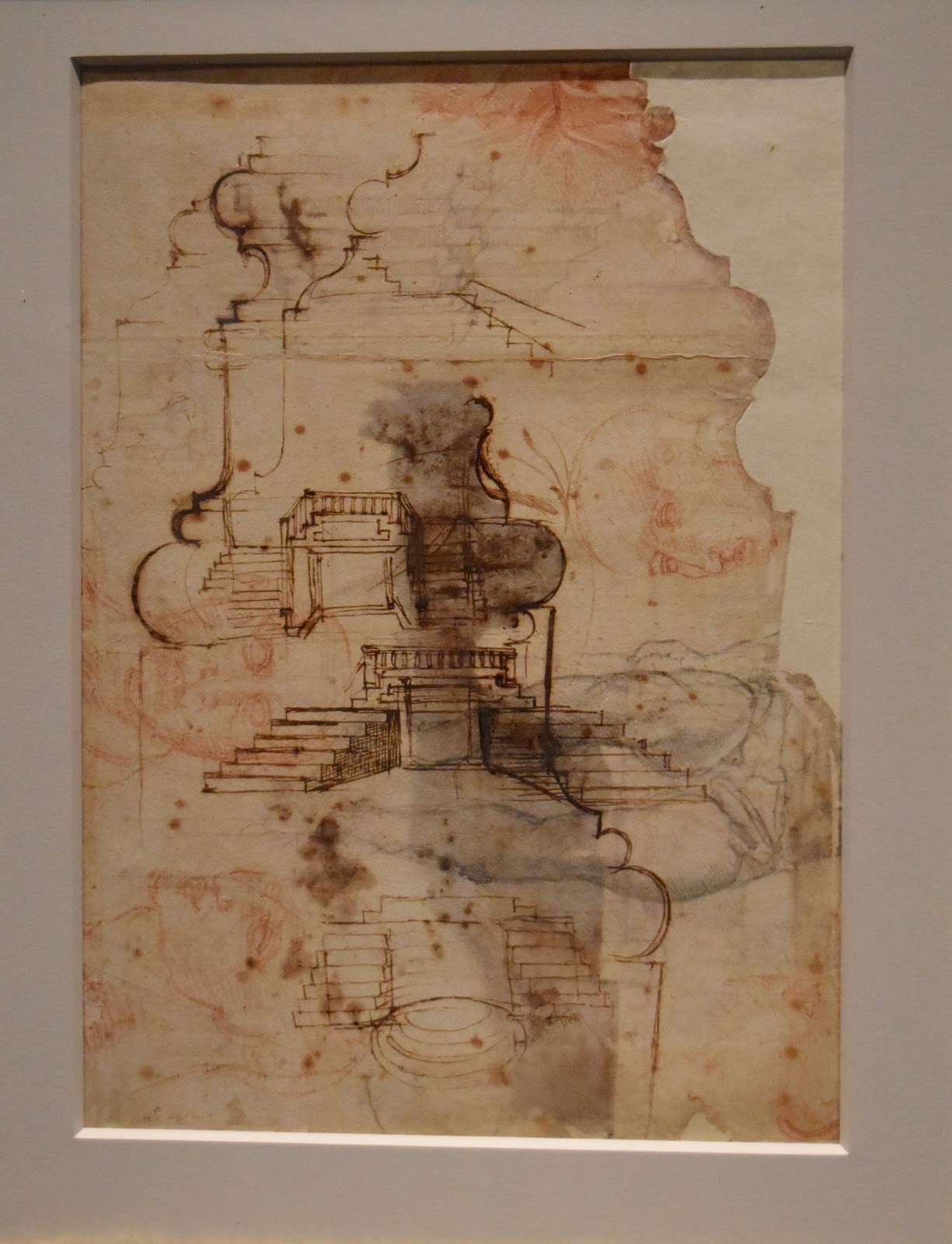
Studies for a staircase proposal served on a bed of hips and legs.
Luckily, the Met got their hands on the exquisitely torso and hipped Young Archer (Michelangelo tends to lose focus at the extremities, look at size of the poor kid’s head and thighs) along with a bunch of whole-body studies that show off what Michelangelo is best at: redirecting his repressed passions into impossible versions of the male bod.
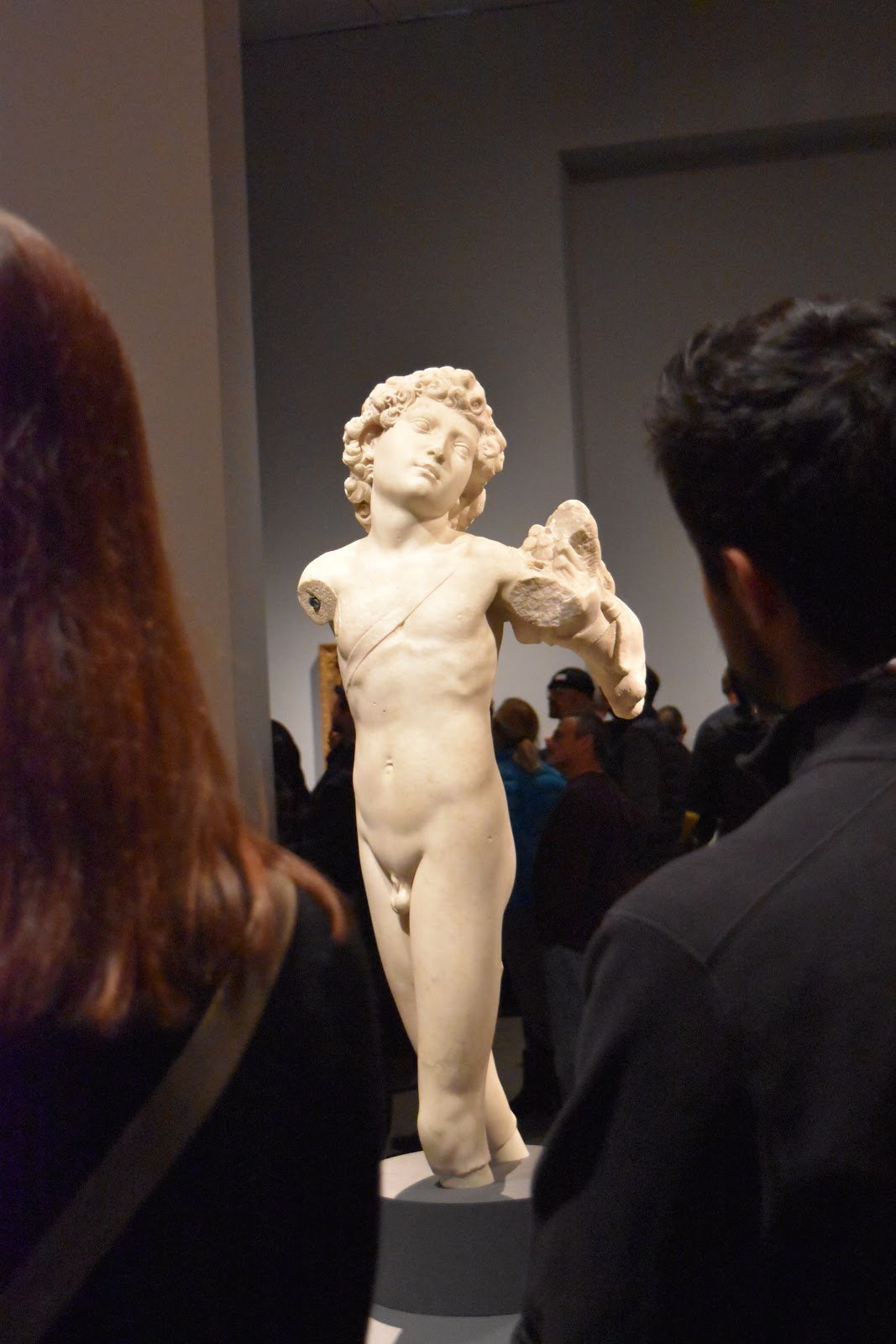
Michelangelo Buonarotti Young Archer at the Metropolitan Museum of Art, New York
If you’re in New York before February 12th, 2018 it’s worth a visit. Plus there’s a Hockney exhibition showing just around the corner and if you get lost you might just run into a Matisse and then a Bonnard and then a Van Gogh. The joy of museums is that there’s no such thing as a wrong turn.
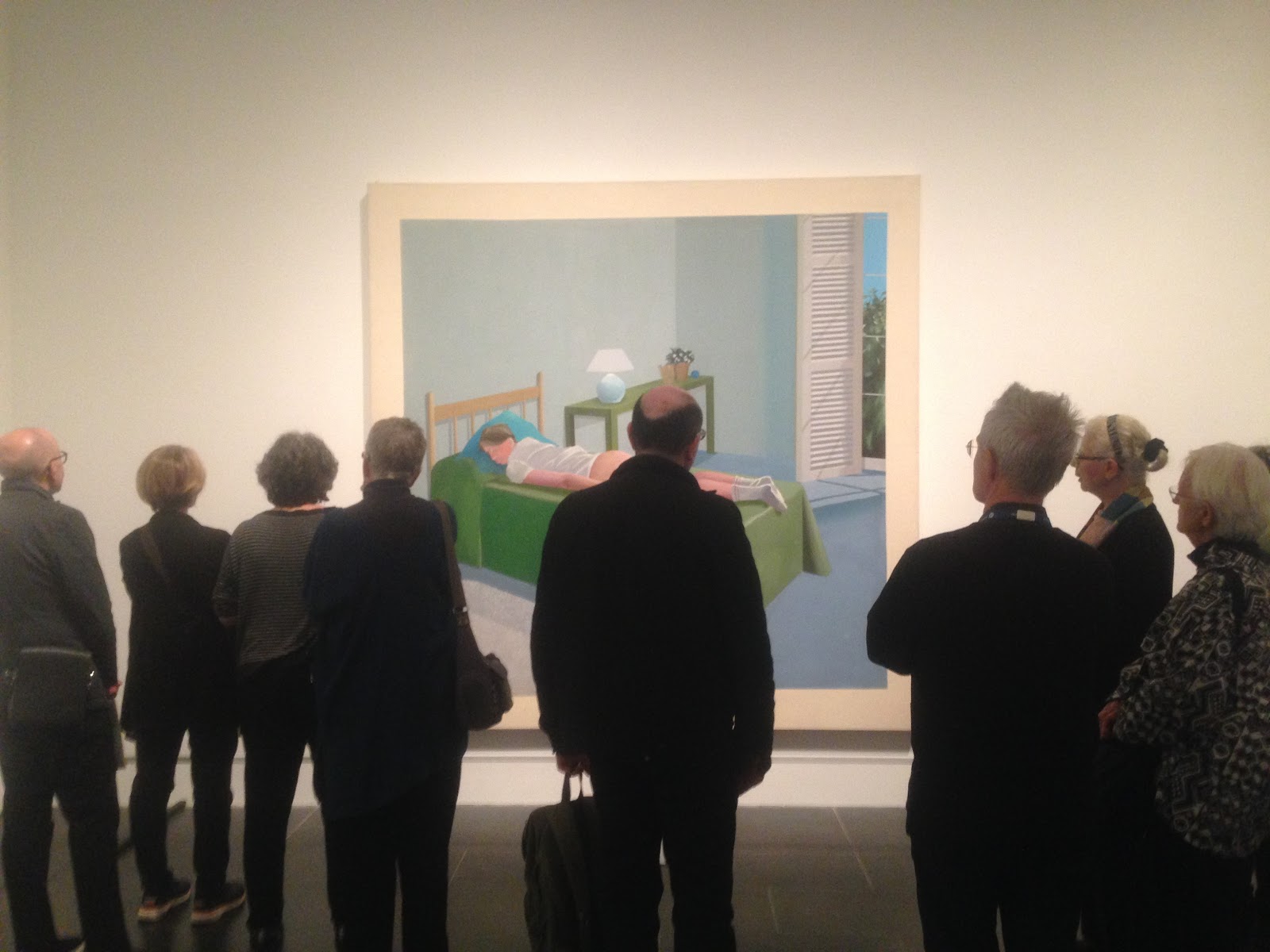
The biggest question really is whether the bald guy staring at this Hockney is the same dude that was peeping Michelangelo’s study of two butts shown above.
Sources
- Brundin, Abigail. “Colonna, Vittoria (1490–1547).” University of Chicago Library Website, 2005. Accessed December 11, 2017. https://www.lib.uchicago.edu/efts/IWW/BIOS/A0011.html











